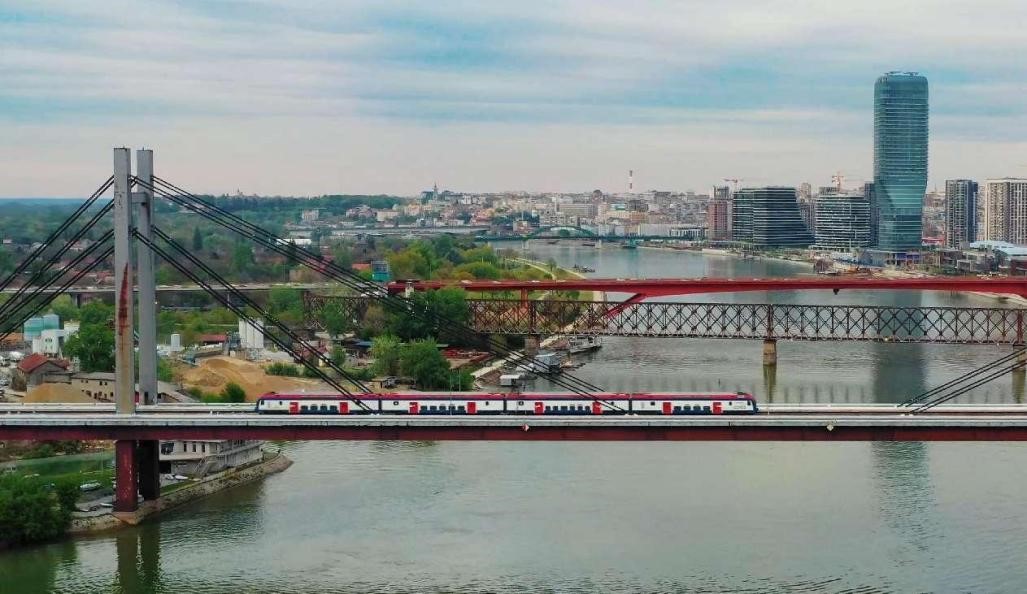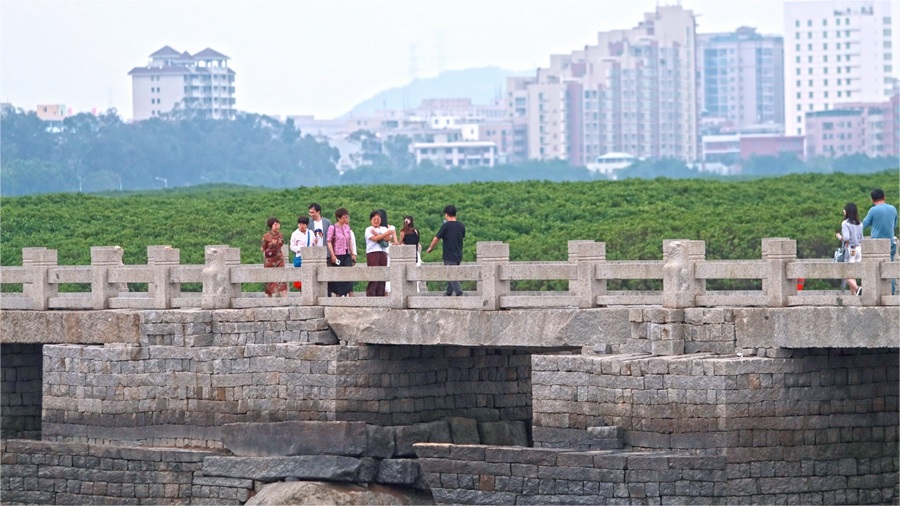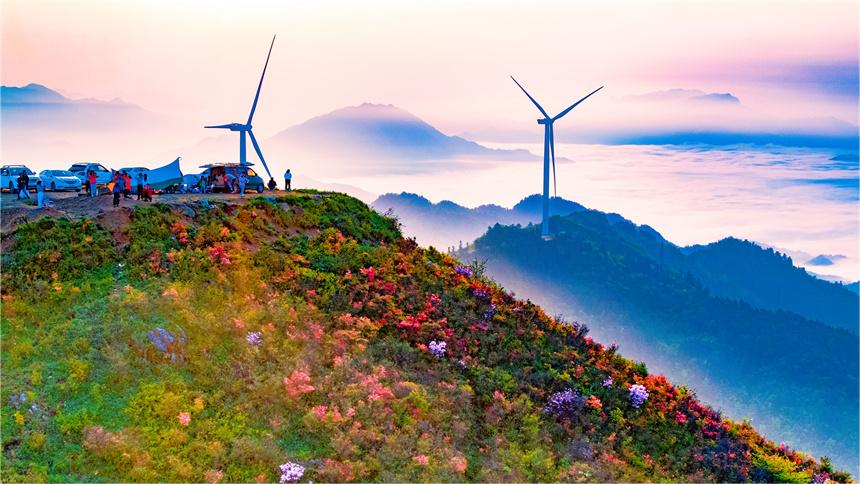Hungary-Serbia Railway brings more convenience to local people
As a flagship project of cooperation between China and Central and Eastern European countries, the Hungary-Serbia Railway is an important part of the European transport corridor and the China-Europe Land and Sea Express Line. It is of great significance to the synergetic development between the Belt and Road Initiative (BRI) and European development strategies. Since its commencement, the project has garnered widespread attention.

A high-speed train arrives at the Novi Sad station, Serbia. (People's Daily/Liu Zhonghua)
On March 19, 2022, the Belgrade-Novi Sad section of the Hungary-Serbia Railway in Serbia went into operation. This new route has not only facilitated local passengers, but also placed Serbia among the nations with high-speed rail. According to statistics, the Belgrade-Novi Sad section has carried 6.83 million passengers during its two years of operation.
On a morning at the Belgrade Center railway station, passengers were waiting in line on the platforms for the arrival of the train Coko, which is named after the Serbian word for falcon, a bird known for its speed. The Belgrade-Novi Sad section is as fast as a coko – the trip from Belgrade to Novi Sad can be completed in just half an hour.
"Substantially decreasing the distance between Serbia's two most vital cities, the high-speed rail has brought changes to our lives," said a passenger.
Passenger Milika often travels between the two cities. She said that a one-way high-speed rail ticket from Belgrade to Novi Sad costs less than 5 euros ($5.33), and a monthly pass provides even greater affordability. Driving between the two cities would cost over 10 euros in tolls, fuel, and parking fees, with a travel time of over an hour, Milika added.
Nenad Stanisavljevi?, head of public relations department of Serbian Railways, noted that an increasing number of Serbians are now accustomed to taking the high-speed rail, as it is comfortable and provides a safer and more convenient travel experience.
The waiting hall of the Novi Sad station, built in 1964, is currently undergoing expansion in response to the rising passenger numbers since the opening of the high-speed rail line.
Veselin Simovi?, a person in charge of railway infrastructure in the Novi Sad region, said that the original Hungary-Serbia railway line was constructed in 1883 and had severely aged. Some sections were no longer operational, while the maximum speed on the operational sections was less than 40 kilometers per hour. Delays of trains often happened, Simovi? added.
However, the situation has dramatically changed with the opening of the Belgrade-Novi Sad high-speed rail section, according to Simovi?.
"Now we have a stable daily ridership of 8,000 to 10,000 passengers, with even more on weekends. Taking a high-speed rail to Belgrade for work in the morning and returning to Novi Sad in the evening has become a choice for many people," said Simovi?.

A high-speed train runs on a bridge across the Sava River in Belgrade, Serbia. (Photo/Li Gangyu)
Milan Banovi?, chief engineer of the Hungary-Serbia Railway, has joined the project since its inception. Speaking of his experience working with Chinese colleagues, he said, "I learned a lot from them, and together with my Serbian engineer colleagues, we helped our Chinese counterparts resolve many localization issues. Our cooperation was very pleasant. Last year, I visited China twice and even rode on Chinese high-speed trains, which left a profound impression on me."
So far, China has offered training for over 40 Serbian technical personnel, fostering a group of young technical professionals proficient in the world's most advanced railway technologies in Serbia.
Near the Novi Sad station, track-laying work has commenced for the Novi Sad-Subotica section of the Hungary-Serbia Railway. The section is expected be completed by the end of 2024, which will mark the completion of the Serbian section of the Hungary-Serbia Railway.
During his visit to the construction site, Serbian President Aleksandar Vucic said he was satisfied with the progress of the construction of the Novi Sad-Subotica railway section. He thanked the Chinese companies for their efforts to complete the project ahead of schedule.
"This is a significant change for the Serbian people and the entire country, as travel time between Belgrade and Subotica will be reduced to just 75 minutes," Vucic said, expecting the enhancement to attract more tourists.
Ivona Ladjevac, deputy director at the Institute of International Politics and Economics in Belgrade, has long been following the development of BRI.
In her view, Serbia needs a modernized railway to support the country's overall development. The Hungary-Serbia Railway not only facilitates transportation within Serbia but also connects the European continent, increasing freight capacity and transit capability.
"This railway is very important for the development of Europe. It has also provided many job opportunities for local communities. The areas along the high-speed rail line are gaining more development opportunities," said Ladjevac.
Photos
Related Stories
- China, Serbia deepen pragmatic cooperation in infrastructure
- Serbian capital lined with flags, banners in warm welcome for Chinese president
- Serbian expert hails 'ironclad friendship' with China
- Serbian hoops to make a home in China
- Zemun-Borca Bridge in Serbia showcases friendship between two countries
- Serbian people embrace Chinese culture?courses
- China Cultural Center in Belgrade opens to public
Copyright © 2024 People's Daily Online. All Rights Reserved.









